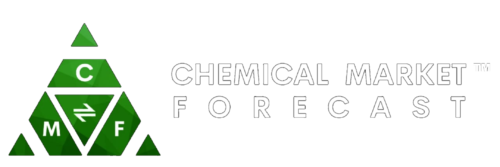Glycerine is a versatile chemical compound with a wide range of applications in various industries. It is a colorless, odorless, and viscous liquid that is widely used as a solvent, sweetener, and moisturizer.
What is Glycerine?
Glycerine, also known as glycerol, is a sugar alcohol that is derived from fats and oils. It is a trihydric alcohol with three hydroxyl groups (-OH) and has a molecular formula of C3H8O3. It is a natural byproduct of the soap-making process and is commonly used as an ingredient in many cosmetic and personal care products. Industrial Applications for Glycerine Glycerine has a wide range of industrial applications, primarily in the food, pharmaceutical, and personal care industries. In the food industry, it is used as a sweetener, thickening agent, and preservative. In the pharmaceutical industry, it is used as a solvent and a moisturizer. In the personal care industry, it is used as an ingredient in soaps, shampoos, and moisturizing creams.
Key Players and M&A in the Glycerine Market
The global glycerine market is highly competitive, with many key players operating in the industry. Some of the major players in the market include Cargill, Archer Daniels Midland, Wilmar International, IOI Oleochemicals, and Emery Oleochemicals. These companies are actively involved in mergers and acquisitions to strengthen their market position and expand their product portfolio.
In recent years, the glycerine market has witnessed several M&A activities, including the acquisition of Vantage Specialty Chemicals by H.I.G. Capital, the acquisition of Jungbunzlauer by Cargill, and the acquisition of Caravan Ingredients by Corbion. These M&A activities have led to the consolidation of the market and the emergence of new market players.
Technology Trends in the Glycerine Market
The glycerine market is constantly evolving, with new technologies emerging to improve the quality and efficiency of glycerine production. One such technology is the use of biodiesel as a feedstock for glycerine production. This technology has gained popularity in recent years due to its environmental benefits and cost-effectiveness.
Another technology trend in the glycerine market is the use of glycerine as a raw material for the production of biofuels. Glycerine can be converted into biodiesel through a process called transesterification, which involves reacting glycerine with methanol in the presence of a catalyst. This technology has the potential to reduce our reliance on fossil fuels and mitigate the environmental impact of transportation.
Glycerine market Value chain
The value chain for glycerine begins with the production of biodiesel, where glycerine is obtained as a byproduct. It is then purified and processed for use in various industries, including food, pharmaceuticals, and personal care. The key end use industries for glycerine are diverse, with applications ranging from sweeteners and thickeners in food products to moisturizers and solvents in pharmaceuticals and personal care products.
In the personal care and cosmetics sector, glycerine is used as a humectant, which means it helps to attract and retain moisture in the skin, making it an ideal ingredient in products such as moisturizers, lotions, and soaps. Glycerine is also used as a solvent in the fragrance industry, allowing for the easy mixing of various scents.
In the food and beverage industry, glycerine is used as a sweetener, as it is approximately 60% as sweet as sucrose but has fewer calories. It is also used as a thickening agent, particularly in confectionery products such as candy and chewing gum, as well as in baked goods, such as cakes and pastries, to help improve texture and moisture retention.
Moreover, glycerine also finds application in the tobacco industry as an additive in tobacco products, as it helps to enhance the taste and aroma of the tobacco, making it more palatable to consumers.

